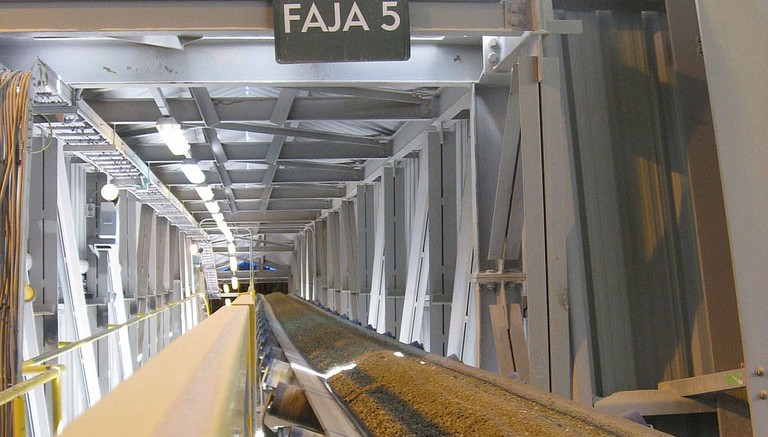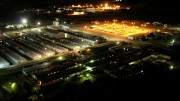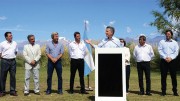In January 2013 Rob McEwen’s McEwen Mining (TSX: MUX; NYSE: MUX) opened its 100%-owned El Gallo 1 open-pit heap-leach mine in Mexico for $13 million. This year the mine is expected to produce 40,000 oz. gold at an average cash cost of US$750 per oz. The company will complete a $3-million expansion this year at El Gallo 1 that will raise production in 2015 to 75,000 oz. at an average cost of US$575 per oz.
This year El Gallo 1 is forecast to generate $5 million in free cash flow, and next year McEwen Mining anticipates that figure will rise to $30 million. The company is also working on its El Gallo 2 project, 5 km from the El Gallo 1 mine. El Gallo 2 is one of just two new mine projects in Mexico (Torex Gold Resources [TSX: TXG] is the other) that McEwen says has all of its permits in place. The 4.05 sq. km land package at the El Gallo complex contains 50 historic mines that have yet to be drilled in modern times, and the company says it is particularly excited about two targets 15 km southeast of the El Gallo 1 mine.
Meanwhile in Argentina, the company’s 49% ownership of the San Jose mine has generated $18 million in free cash flow for the company over the last year and a half. (Hochschild Mining [LSE: HOC; US-OTC: HCHDF] owns 51% and is the mine operator). The devaluation in the Argentine peso in January drove up mine costs — denominated in pesos — by 20%. Last year McEwen Mining hired BMO Capital to find a buyer for its Los Azules open-pit copper project in Argentina’s High Andes. With 20 billion lb. copper at 0.55% copper, it is one of the largest undeveloped copper assets in the world. McEwen Mining also owns 100% of the Gold Bar project in Nevada, 28 km southeast of Barrick Gold’s (TSX: ABX; NYSE: ABX) Cortez mine.
The company has $25 million in cash and no debt. Its largest shareholders are McEwen (25%), Van Eck (13%), Royce (3%), Jennison (2%) and BlackRock (2%). It is covered by one analyst (the two other firms that were following the company were casualties of the low gold market).
McEwen spoke at a company-sponsored luncheon at the InterContinental Hotel during the Prospectors & Developers Association of Canada convention in Toronto on March 5. The following is an edited excerpt of his comments on gold, royalty companies and Argentina:
Gold
“We’ve seen the bottom for gold and it’s heading higher. If you look at gold as an investment from 2001, when we saw the price recover after a 20-year fall — if you had just bought and held your gold, you would have been ahead of the Dow or the S&P, and to me that shows the strength of this investment and the importance to have a continued exposure to the space.
“The broad market has behaved well in an environment where interest rates are low, and there has been an awful lot of stimulation to the economy by the Federal Reserve in the U.S. and western governments around the world, but they have been doing it with a lot of debt . . . if interest rates start turning, which they have been at the long end of the curve, it becomes more expensive to service that [US$17.4-trillion] debt . . . just start thinking if you had to pay 5% on that money, what would it cost? A little shy of a trillion dollars. That is going to crowd out a lot of other services that are provided by the government not only in the U.S., but around the western world. So there is a complacency in the market that all the problems we experienced are behind us, and that’s not the case. They’re still there, they have just been disguised for the moment, and they are reappearing. You’ve seen it in fuel prices, food prices, rent — there is inflation going on out there. You can see it illustrated also when people buy pictures for $110 million dollars. So I think you should be in gold stocks.”
Royalty companies
“I’ve never been a fan of hedging and metals streaming, and royalty companies are another form of hedging. These companies have been good at extracting revenue streams from the mining companies and in essence, mining companies look at royalties and metal streaming as non-dilutive to shareholders. What they’re forgetting is they’re giving away the profit margin, and in a low price environment, you’re giving away the entire reason for being in business when you’ve sold a royalty or a metals stream, and that is to make money — for your shareholders and your future.”
Argentina
“Our first mine in production was San Jose in Argentina. Just before I came to this meeting, I spent half an hour with Argentina’s secretary of mines talking about the issues there. There have been some positive developments, and he would lead me to believe that there will be more to come. They let Chevron come into the country recently, a billion-dollar investment to develop their oil-shale production, but they gave them a lot of concessions. There’s a law right now that requires that your export revenues need to come back into the country, go through the central bank, get converted into pesos and then given back to the company. Chevron was able to say: ‘Well, we’re only going to bring back 80% of our revenue, and the other 20% you can keep offshore.’ [Argentina said:] ‘We’re going to allow you to be exempt to the export tax. We’re going to allow you, after you’ve spent a billion dollars, to have a 50% residual interest in the oil wells, even if you leave the country.’ So all of that is positive. I said [to the Secretary of Mines] that ‘Well, why don’t you take what you’ve done for Chevron and look at the mining industry, in particular we have a large copper project called Los Azules, and the capex on it is $4 billion, or four times what Chevron put in,’ and he did suggest that they were looking at what they did with Chevron to apply to the mining industry.
“I think we’re past the bottom. Our projects down there are generating cash that we are receiving. Last year we spent $25 million — largely generated from San Jose — to put into Los Azules, bringing that up to 20 billion lb. copper.”
Selling Los Azules
“Early last year we retained BMO Capital [to find a buyer for Los Azules], and they went around to all of the major copper producers and would-be copper buyers. It was quite an extensive list that they approached. And I’d have to say the size of the project — which has a $4-billion capex — was not a popular item at the time, when you saw most of the mining projects in the world going over budget and behind schedule, and a large number of the CEOs at the major companies being removed. The companies didn’t have an appetite and Argentina was a big uncertainty. I know Ross Beaty has been trying to sell Taca Taca for awhile out of Lumina Copper, and his hasn’t gone yet. It shares the same issues with Argentina — the uncertainty.”






Be the first to comment on "Rob McEwen on gold, royalty companies and Argentina"